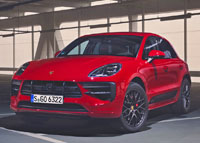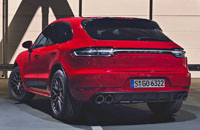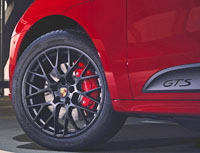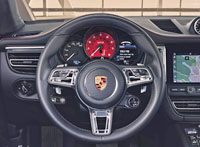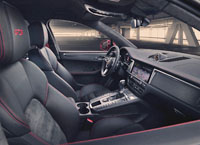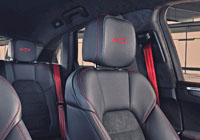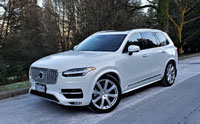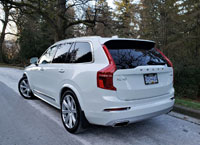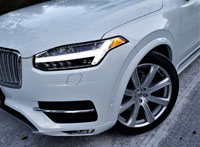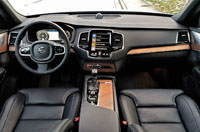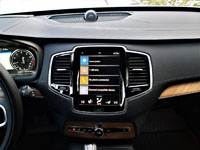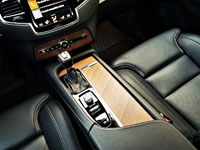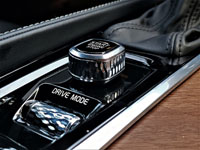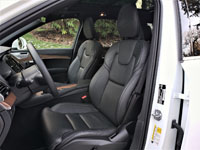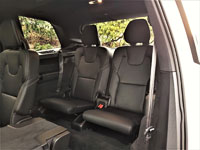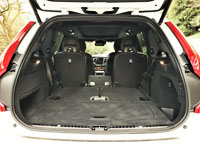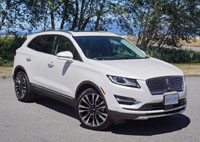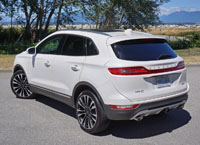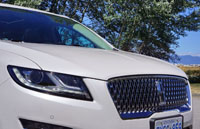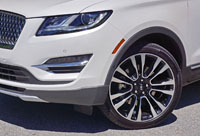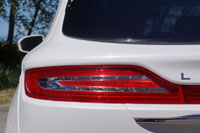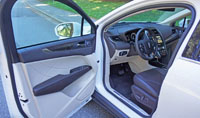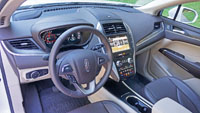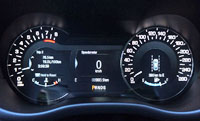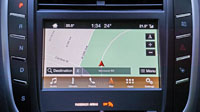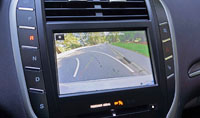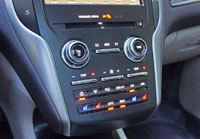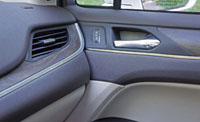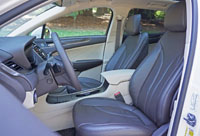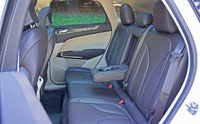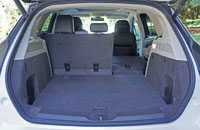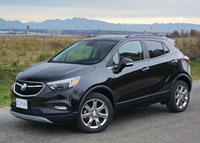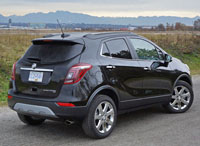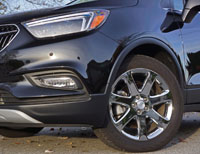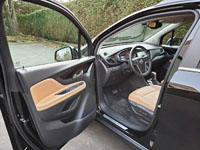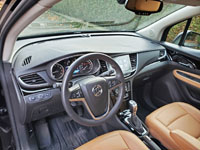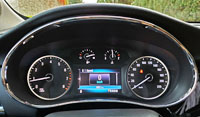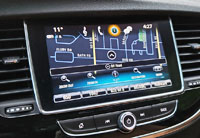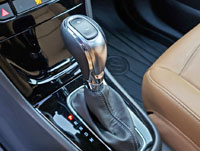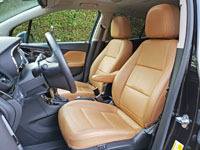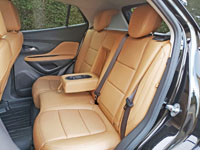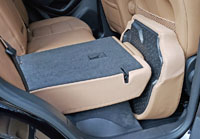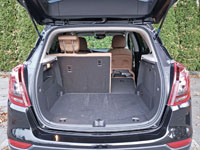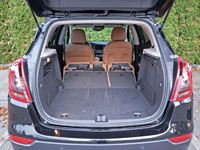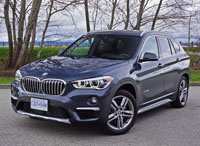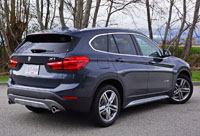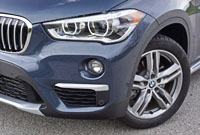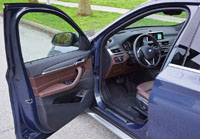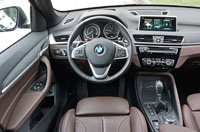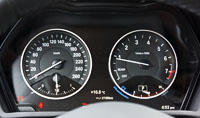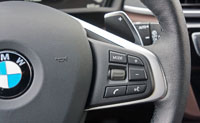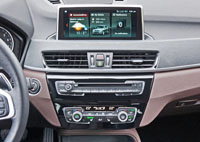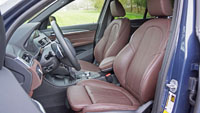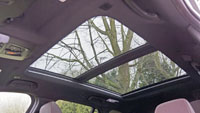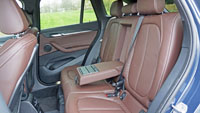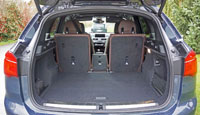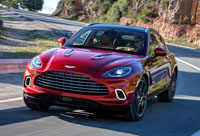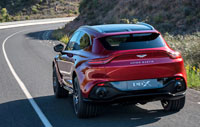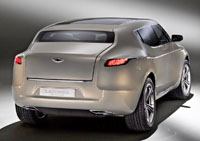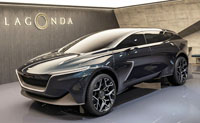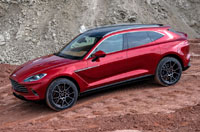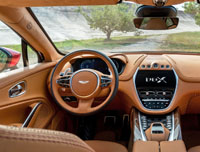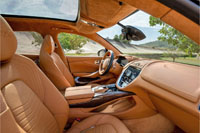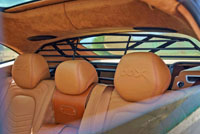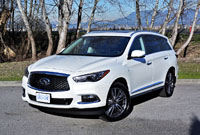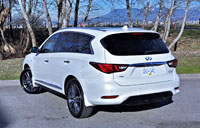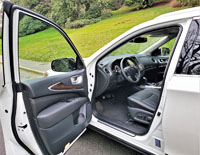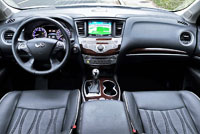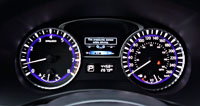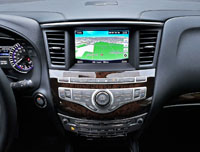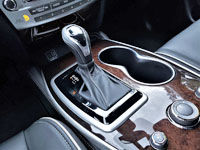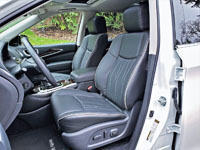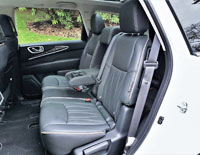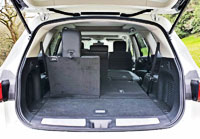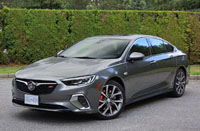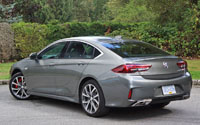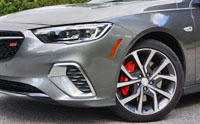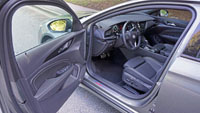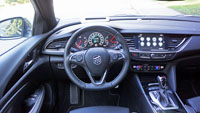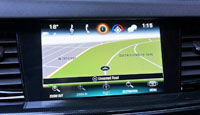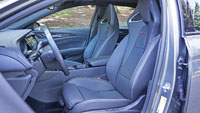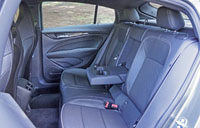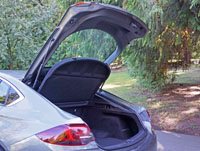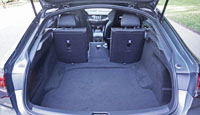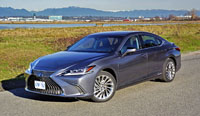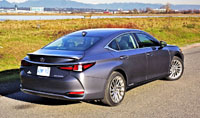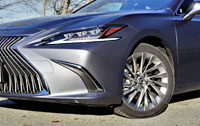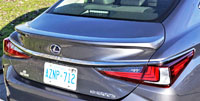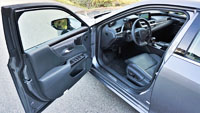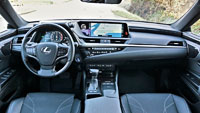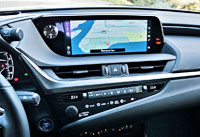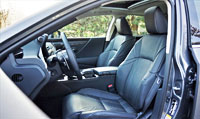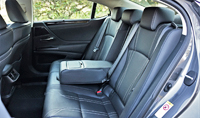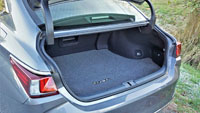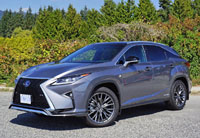
Lexus will refresh its top-selling RX mid-size crossover luxury SUV for 2020, so therefore I rounded up three 2019 examples as a sort of sayonara to the outgoing version. The changes aren’t dramatic, but most of those who’ve lived with this popular model should be happy with everything they’ve done.
Now that I’ve teased your curious mind, the 2020 RX updates include new front and rear fascias, slimmer triple-beam LED headlights and reworked tail lamps with fresh “L” shaped LED elements, new 18- and 20-inch alloy wheels, and promised improvements in driving dynamics thanks to thicker yet lighter stabilizer bars as well as a tauter retuned suspension system designed to benefit handling via new dampers that also enhance ride quality.
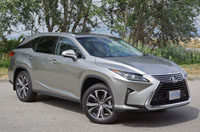
Also new, the addition of active corner braking is said to reduce understeer, while paddle shifters, which are standard across the RX lineup for 2020, should allow for more hands-on engagement. Lexus has also increased standard safety features with daytime bicyclist detection and low-light pedestrian detection as well as Lane Tracing Assist (LTA), while finally the infotainment system has been updated with a new lower console-mounted touchpad controller, and, a first for Lexus, Android Auto smartphone integration has been added to its standard features set.
Despite the 2020 RX being a completely new model, CarCostCanada members can still save up to $2,000 in additional incentives, while those ok forgoing some of the upgrades in order to get a discount can access up to $4,500 in incentives on a 2019. CarCostCanada members are actually saving an average of $2,777 on both 2019 and 2020 models, first by learning about available manufacturer rebates that your local retailer might rather keep for themselves, and then by finding out about a given model’s dealer invoice price before starting the negotiation.
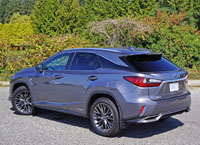
The same four RX models will be available for 2020, which include the RX 350 and RX 450h hybrid, plus the new extended-wheelbase, three-row RX L with either powertrain. The RX continues to represent good value in its class with a base price of just $55,350 for the entry-level 2019 RX 350, while the 2019 RX 450h starts at $64,500, the RX 350 L at $66,250, and lastly the RX 450 L at $77,600. The refreshed 2020 base model’s pricing rises by $700, which isn’t too bad when factoring in all the previously mentioned standard improvements, but interestingly pricing for all other trims have been lowered by $5,700, $7,200, and $1,500 respectively thanks to more affordable decontented packaging. This smart move down market makes the base long-wheelbase and base hybrid models accessible to many more potential buyers.
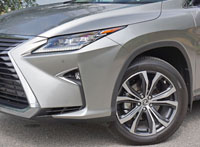
Of the three 2019 RX models gathered together for this review, the two regular length models came in Lexus’ performance-focused F Sport trim, and the longer model in six-passenger Executive trim. As you might expect, the second row bench seat of this particular example was swapped out for two individual buckets, while the $6,050 upgrade also includes LED illuminated aluminum front scuff plates, premium leather upholstery, a hardwood and leather-wrapped steering wheel, a head-up display, a 15-speaker Mark Levinson surround sound audio system, a wireless device charger, 10-way power-adjustable front seats, power-recline rear seats, rear door sunshades, power-folding rear seats, and a gesture-controlled powered tailgate.
As the name implies, F Sport trim takes a more sporting approach to styling and features, with the former including more aggression in the front grille and fascia design, upgraded LED headlights with cornering capability, sportier 20-inch alloy rims, an adaptive variable air suspension, Vehicle Dynamics Integrated Management (VDIM), unique “F SPORT” branded scuff plates, a mostly digital primary instrument cluster, a sport steering wheel with paddles and a special shift knob, aluminum sport pedals with rubber inserts, performance seats, premium leather upholstery, and more.
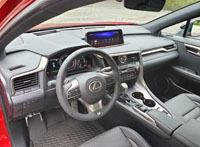
As has long been the case, Lexus offers the RX with both conventional and hybrid electric powertrains, housing a 3.5-litre V6 under the hood in both instances. Interestingly, the regular and long-wheelbase models powered solely by the internal combustion engine (ICE) put out different numbers, with the RX 350 good for 295 horsepower and 268 lb-ft of torque, and the RX 350 L only making 290 horsepower and 263 lb-ft of torque. The RX 450h, on the other hand, makes more power at 308, yet comes up a bit weaker for torque at just 247 lb-ft.
You might not mind that weakness when it comes time to fill up, however, as the RX 450h gets a claimed fuel economy rating of just 7.5 L/100km in the city, 8.4 on the highway and 7.9 combined with its regular wheelbase, or 8.1 city, 8.4 highway and 8.1 combined when extended. The RX 350 and RX 350 L, on the other hand, manage 12.2 L/100km city, 9.0 highway and 10.8 combined in two-row trim, or 13.1, 9.4 and 11.1 respectively with its third row installed.
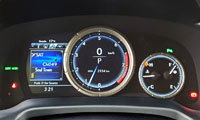
Like most all-wheel drive hybrids, the RX 450h powers its front wheels with the ICE and rears via an electric motor, but its 160-kg of added curb weight doesn’t allow its extra power to lend an advantage off the line. The hybrid’s CVT (continuously variable transmission) doesn’t seem to help in this respect either, although it probably doesn’t hamper straight-line acceleration, yet the conventionally powered model’s eight-speed automatic delivers a more engaging driving experience that I prefer, especially when mated up with paddle shifters.
As mentioned, those paddles come as part of the F Sport upgrade, as does a special Sport+ driving mode. It gets added to the base RX model’s Normal, Sport, and Eco drive mode settings, while the hybrid models get an EV mode to eke out better mileage. EV mode only stays engaged at slow parking lot speeds however, so don’t expect to be able to drive it around town unless you’re slowed to a crawl. At the other end of the performance spectrum, I couldn’t feel a lot of difference between Sport to Sport+ modes, other than firmness added via the adaptive variable air suspension, that is.
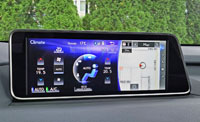
Ride and handling in mind, the RX’ fully independent MacPherson strut front and double-wishbone rear suspension feels a bit firmer in the F Sport than with more comfort-focused trims all around, while the extended-wheelbase RX L was comfortable without giving up too much when it came to carving corners. Either way the RX is a lot more about comfort than performance, which is why Lexus went to such lengths to reduce noise, vibration and harshness levels by creating a very rigid body structure, being generous with sound insulation, and making sure its powertrains are well refined.
Soft-touch surfaces and leather help to reduce NVH too, yet as good as the RX is when it comes to materials quality it doesn’t quite measure up to the three Germans and sole Swede in this class. Above the waste it’s mostly high-quality pliable composites, glove box lid included, while some surfaces on the dash leather-like with stitching and padding, but surprisingly, just to the left of the steering column, harder plastics prevail, these also found on the lower portions of the dash, centre console (that otherwise has its top edges finished in stitched leatherette) and door panels.
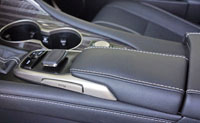
Both F Sport trims received stylish metallic inlays across the dash, lower console and upper doors, but I was wowed even further when seeing the extended-wheelbase model’s beautiful hardwood trim. Most was a high-gloss dark hardwood, but every half-inch or so there were thin pieces of lighter hardwood laminated within for a gorgeous double pinstripe appearance. Lexus won’t shortchange you on brushed metal trim either, with some of it appearing authentic and other areas not so much, but interior build quality is generally quite good, including the buttons, knobs, toggles and rocker switches.
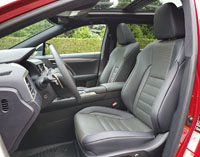
All three RX models appeared to have similarly sporty seat designs, or at least they did at first glance. This may have been due to their contrast-stitched black perforated leather coverings, but upon closer inspection both F Sport models’ seats received a bit more side bolstering, aiding lateral support when pushing harder through curves. While all looked great and were comfortable overall, only the longer 350 L with its Executive package upgrade featured four-way lumbar support. These 10-way powered front seats were therefore very good, but if the two-way powered lumbar in the F Sport models hadn’t met up with the small of my back I would’ve certainly been complaining.
Fortunately the RX has always provided plenty of space front to back, with the second row near limousine-like, but the recently added long-wheelbase RX L isn’t in the same league to most three-row competitors. You’d think after all the years Lexus has been planning to introduce a three-row SUV they’d immediately get it right, but even my five-foot-eight body had trouble fitting in comfortably. Getting in and out is plenty easy due to a second row that slides far enough forward for a large opening, but even after moving the second row as far forward as possible before I’d become uncomfortable if seated there, I still didn’t have enough room for my knees when seated in the third row, whereas my head rubbed up against the roofliner.
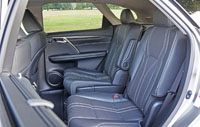
It’s hard to argue against the RX L’s extra 77 litres of cargo space when all seatbacks are folded flat, mind you, shifting the maximum from 1,657 litres up to 1,580, but I’m guessing the last row adds a bit of height to the RX L’s cargo floor, because space behind its second row is down some 43 litres, from 694 litres in the regular wheelbase model to 651. With all seats in use both six- and seven-passenger RX Ls leave 212 litres of free space in the very back, which is good enough for some small suitcases or a golf bag.
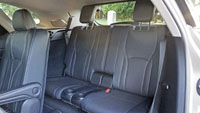
Reading over my notes from all three weeklong RX tests, my biggest complaint was clearly the infotainment system. Not the screen up top that’s actually very impressive, but rather the joystick-style controller on the lower console. Lexus replaces this with its newer touchpad control for 2020, so kudos to them for finally modernizing an aging system, but those hoping to buy a 2019 will want to test out both systems before taking the plunge. It’s a functional system, made better by side entry buttons, but it simply feels antiquated in this world of touch-sensitivity. Haptic feedback locks in its various prompts, helping with the user experience, but this will be true of the new touchpad design so I can’t see many sorry for the joystick’s departure. As just noted, the high-definition display hovering above is excellent, while it’s also difficult to find fault with the overall functionality of the infotainment system itself, nor its features and functions, but Android phone users should be reminded that Android Auto smartphone integration won’t be available until next year.
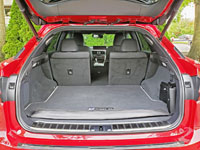
Digital interfaces in mind, I was surprised to find out that the RX’ uninspiring standard instrument cluster carries forward for 2020. It’s about as basic as analogue gauges get for this class, consisting of a large speedometer and tachometer plus two sub-dials for engine temperature and fuel, centered by a tall, narrow full-colour multi-information display that’s really more like a trip computer. The package looks tired and dated in a vehicle as edgy and modern as the RX, particularly when factoring in that a number of RX challengers now come with standard digital instruments, or at the very least offer them as options. Of course, Lexus provides a mostly digital cluster optionally too, but only with the F Sport. My long-wheelbase RX 350 L tester had the most basic gauge cluster, even when optioned out with the Executive package, at it was priced higher than the RX 350 F Sport. This said, even the upgraded LFA-inspired digital gauges don’t provide the ability to transform most of the cluster into a big map, like Audi’s Q7 and some others, which is a bit of a letdown in this class.
It’s probably not fair to harp to harshly on Lexus’ RX, being that it’s been with us for some time and is only about to go through a mid-cycle refresh. After all, the auto industry moves at an amazingly fast pace when it comes to digital interfaces. What should matter more is everything else the RX does so very well, and the fact that so many Canadians believe it’s the best way to spend their mid-size luxury SUV dollar. Good looking, refined, efficient, luxurious, reliable and priced well, it’s hard to argue against any RX model.
Story and photo credits: Trevor Hofmann

